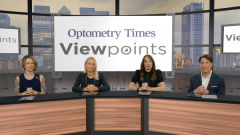
Managing Unique Dry Eye Disease Subtypes in Patients
The experts further discuss managing neuropathic pain, differentiating peripheral from central mechanisms, validating patients’ symptoms, and using imaging technologies to enhance education and track progress.They describe strategies that rebuild trust, including clearly explaining findings during the exam, demonstrating abnormalities the patient can feel or visualize, and confidently outlining a tailored plan. The experts also find it helpful to show patients a comprehensive list of available treatments, reinforcing that many options remain. The panel highlights the importance of frequent follow-ups—often at 4 weeks, then every 3–6 months—to maintain partnership, monitor progress, and ensure patients never feel abandoned in their care. They also stress collaboration with local physicians for those traveling long distances, reinforcing continuity and shared control in management.
Episodes in this series

In this segment, the expert panel explores two of the most challenging dry eye subgroups: patients with neurotrophic keratitis and individuals with persistent symptoms following refractive surgery. The faculty note that many post-refractive patients develop neuropathic pain syndromes and often would not have been ideal surgical candidates in the first place. They emphasize the importance of routinely checking corneal sensation—even with simple tools such as a cotton-tipped applicator—to identify occult nerve damage.
The panel also highlights the complexities of long-term contact lens wearers, stressing the need to rehabilitate the cornea through strategies such as ocular-sparing lubricants or, when necessary, scleral lenses. They describe evolving approaches to assessing corneal nerve function, including multi-point sensation testing to avoid misdiagnosing neurotrophic disease as severe dry eye.
The experts further discuss managing neuropathic pain, differentiating peripheral from central mechanisms, validating patients’ symptoms, and using imaging technologies to enhance education and track progress. They emphasize that effective care relies more on clinical skill and thoughtful examination than on expensive equipment.
Newsletter
Want more insights like this? Subscribe to Optometry Times and get clinical pearls and practice tips delivered straight to your inbox.
















































.png)


